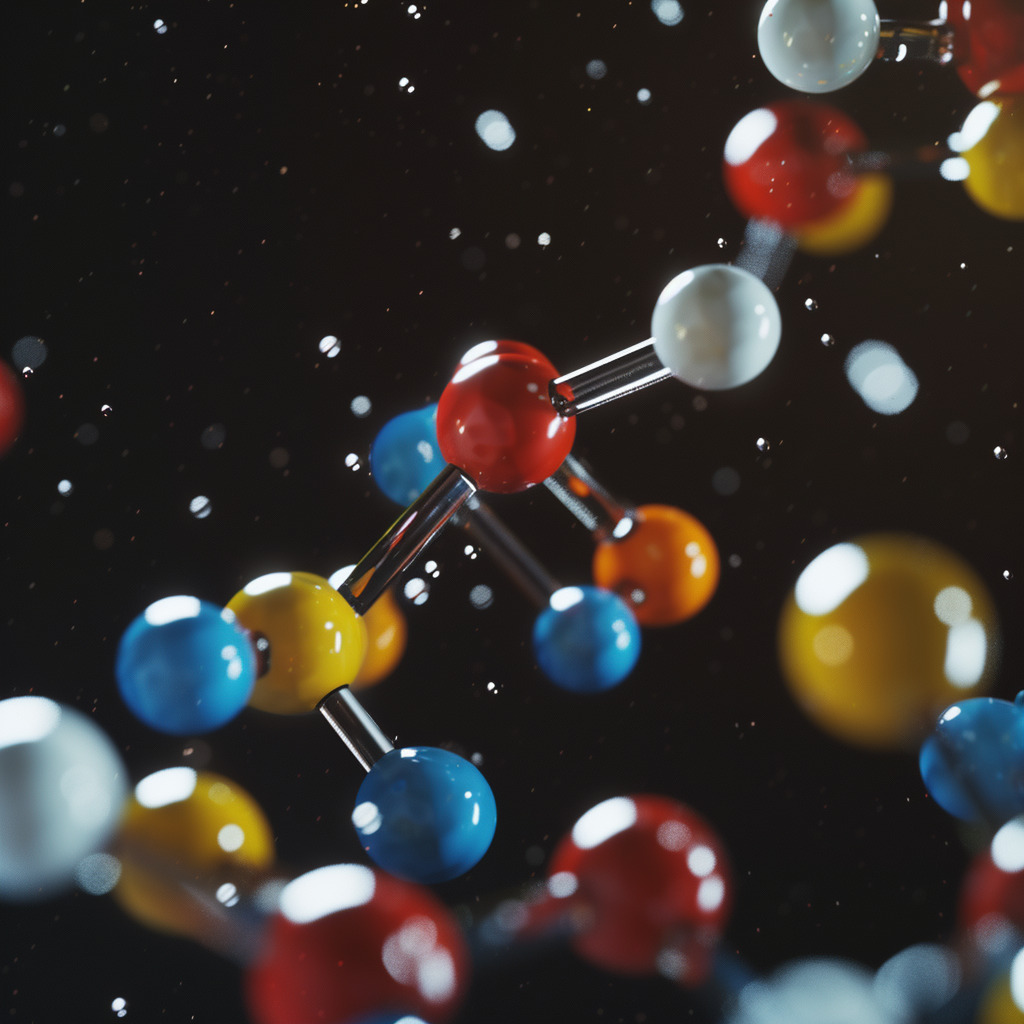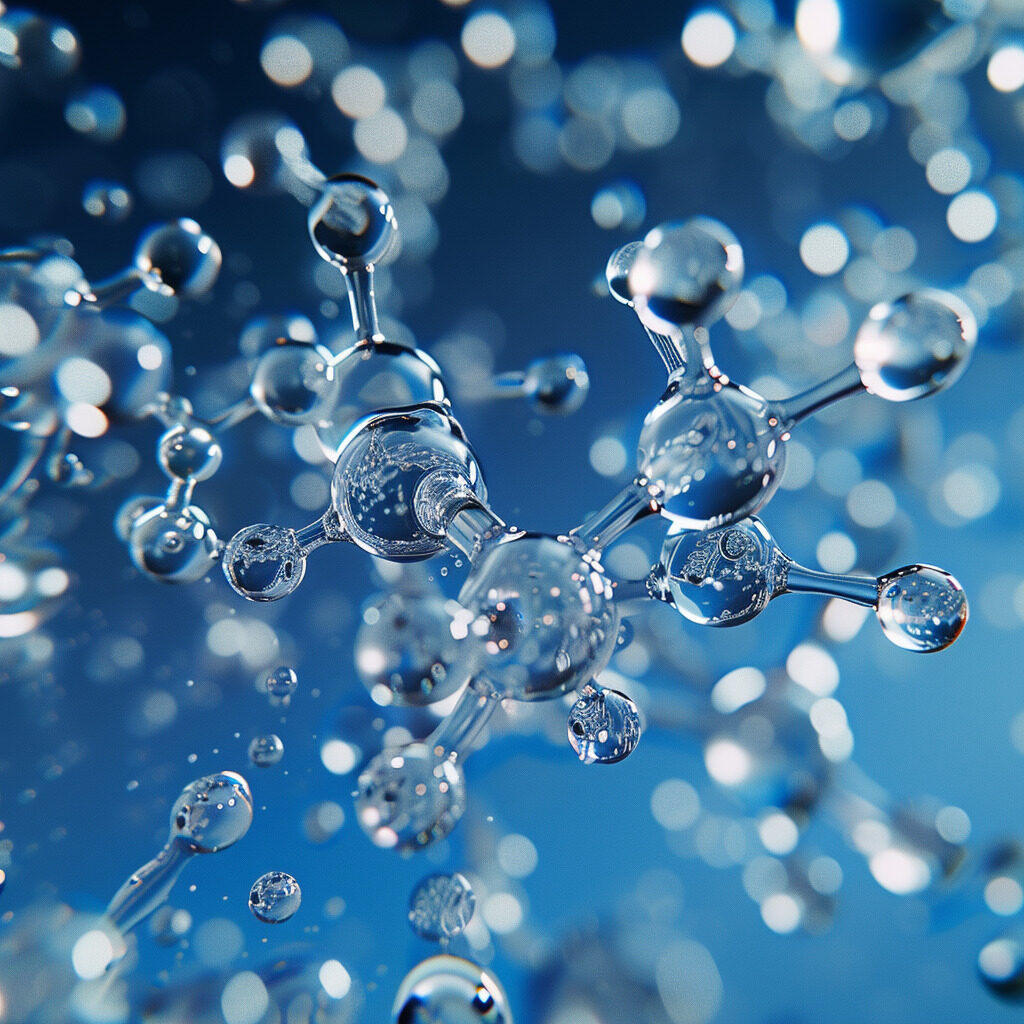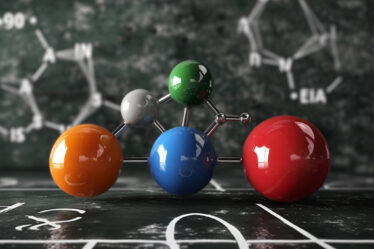
Have you noticed how honey sticks and stretches while water flows away quickly?
This is because of how molecules interact, known as intermolecular forces. Honey’s stickiness and oil’s non-mixing nature with vinegar are examples of these forces. These forces include Van der Waals or London dispersion forces, dipole-dipole interactions, hydrogen bonds, and ion-dipole forces.
Explore halogenides, sulfides, and hydroxides.
Introduction to Intermolecular Forces: Key Takeaways
In a hurry? Don’t worry. Our critical takeaways on intermolecular forces will give you a quick and easy summary of the main points:
🟠 Intermolecular Forces Shape Substance Properties: The forces between molecules, such as London dispersion, dipole-dipole, or hydrogen bonds, affect a substance’s physical properties, such as melting and boiling points, solubility, and viscosity.
🟠 Molecular Polarity Drives Chemical Behavior: A molecule’s polarity, influenced by its shape and its atoms’ electronegativity, determines its interactions with other molecules, explaining the principles of solubility, mixture formation, and intermolecular attraction strength.
🟠 Critical in Biological Systems and Processes: Intermolecular forces influence the structure and function of biomolecules like proteins and DNA. These forces are essential for understanding cell membrane formation and enzyme function.
If you find intermolecular forces challenging, don’t worry! Personalized tutoring or interactive chemistry lessons make these concepts more straightforward. Explore more chemistry topics and broaden your knowledge with our free World of Chemistry blogs.
Introduction to Intermolecular Forces
What Are Intermolecular Forces and How Are They Different from Intramolecular Forces?
Intermolecular forces are the forces of attraction or repulsion between molecules that affect their physical properties. They differ from intramolecular forces, such as covalent bonds, which hold the atoms in a molecule together.
For example, the covalent bond in a water molecule is an intramolecular force. In contrast, the hydrogen bonds between water molecules are intermolecular forces. These intermolecular forces are essential for phenomena like state changes (solid, liquid, gas) and properties like boiling point, melting point, and solubility.
What Are the Types and Strengths of Intermolecular Forces?
We can classify intermolecular forces into four main types, each varying in strength and impact on molecular behavior:
- London Dispersion Forces: These are the weakest and arise due to temporary fluctuations in electron density in nonpolar molecules, creating temporary dipoles that attract each other.
- Dipole-Dipole Forces: These occur between molecules with permanent dipoles, meaning polar molecules. One molecule’s positive end is attracted to another’s negative end.
- Hydrogen Bonds: A strong type of dipole-dipole interaction, but specifically involving a hydrogen atom attached to a highly electronegative atom (nitrogen, oxygen, or fluorine) interacting with another electronegative atom.
- Ion-Dipole Forces: These are significant in solutions where ionic compounds are dissolved in polar solvents, involving the interaction between an ion and the partial charge on a polar molecule.
Are you finding intermolecular forces tricky? A chemistry tutor can provide personalized lessons tailored to your needs, making organic and inorganic chemistry understandable and enjoyable.
London Dispersion Forces
What are London Dispersion Forces and How Do They Arise?
London dispersion forces are the weakest intermolecular forces, affecting all atoms and molecules. They arise from temporary dipoles caused by electron shifts within atoms or molecules. These dipoles can attract nearby atoms or molecules with similar dipoles. London dispersion forces can have a significant impact on substance properties.
Comparing London Dispersion Forces Between Different Molecules
London dispersion forces depend on molecular size, shape, and electron number. Bigger and more electron-rich molecules have stronger forces because of more significant electron shifts. The shape also matters; longer molecules have stronger forces than rounder ones. For example, butane has stronger forces than methane because it is bigger and has more electrons. Linear isomers like n-pentane have stronger forces than branched ones like isopentane because they interact better.
The Impact of London Dispersion Forces on Physical Properties
London dispersion forces directly affect melting and boiling points, solubility, vapor pressure, viscosity, and surface tension. Stronger dispersion forces lead to high melting and boiling points as more energy is required to overcome these forces. This principle is evident in noble gases, where the boiling point increases with atomic size due to enhanced London dispersion forces.
Explaining the Behavior of Substances Through London Dispersion Forces
London dispersion forces explain how substances behave in different situations, such as phase changes and solubility. The state of alkanes, from gas to solid at room temperature, depends on the strength of these forces. The solubility of nonpolar substances in nonpolar solvents also shows matching forces, following the rule that similar forces improve solubility.
Anyone curious about chemistry in daily life can explore simple experiments or consult a chemistry tutor to discover more about the science behind these everyday phenomena.
Dipole-Dipole Forces
What are Dipole-Dipole Forces and How Do They Arise?
Dipole-dipole forces manifest in molecules with permanent dipoles, where the electron density is not evenly distributed, creating regions of partial positive and negative charges. This imbalance leads to electrostatic attraction between neighboring polar molecules’ opposite charges. A classic example is the attraction between the partially negative oxygen atom in one water molecule and the partially positive hydrogen atom in another. These forces are critical for the behavior of polar substances, sitting in strength between London dispersion forces and hydrogen bonding.
Comparing Dipole-Dipole Forces Between Different Molecules
The strength of dipole-dipole interactions varies with the molecule’s polarity, size, and shape. More polar molecules exhibit stronger attractions due to the larger partial charges. The molecular structure also plays a role; for instance, despite carbon dioxide (CO₂) having polar bonds, its linear shape makes it overall nonpolar, reducing dipole-dipole interactions compared to the strongly polar and bent water molecule (H₂O).
Effects of Dipole-Dipole Forces on Substance Properties
Dipole-dipole forces affect substance properties like melting and boiling points, solubility, vapor pressure, viscosity, and surface tension. Molecules with stronger dipole-dipole forces need more energy to change phases, so they have higher melting and boiling points. For example, ethanol has a higher boiling point than diethyl ether because it is more polar. Polar substances also dissolve better in polar solvents because of these forces, following the rule that “like dissolves like.”
Dipole-Dipole Forces in Various Situations
Dipole-dipole forces affect how substances behave in different situations. They are essential for phase changes, like water evaporation, where the forces between molecules must be broken. In solutions, these forces make polar solutes dissolve in polar solvents. Also, the interactions between polar substances in mixtures and reactions can change the results, affecting reaction rates and products.
Suppose you’re on the lookout for a chemistry tutor. In that case, a simple search like “chemistry tutor Liverpool” or “chemistry teacher Edinburgh” on platforms like meet’n’learn can help you find the right private teacher for your needs.
Those who prefer group learning environments can easily find chemistry classes nearby by searching for “chemistry classes Leeds” or “chemistry lessons London” online, leading to local schools or educational centers.
Hydrogen Bonding
What is Hydrogen Bonding, and How Does It Arise?
Hydrogen bonding happens when a hydrogen atom bonded to a very electronegative atom, like fluorine, oxygen, or nitrogen, attracts another electronegative atom from a different or the same molecule. This is because of the significant electronegativity difference, which makes a strong partial positive charge on the hydrogen atom and a strong partial negative charge on the electronegative atom. This interaction is stronger than other dipole-dipole forces because of the significant charge imbalance and the small size of the hydrogen atom, which lets it get closer to electronegative atoms.
Comparing Hydrogen Bonding Between Different Molecules
Some molecules can share their hydrogen atoms with other molecules. This is called hydrogen bonding. The more hydrogen atoms a molecule can share, the stronger its hydrogen bonds are. Water is very good at sharing hydrogen atoms and has strong hydrogen bonds. Ethanol can also share some hydrogen atoms, but not as many as water. So, its hydrogen bonds are weaker. This makes water and ethanol act differently.
The Impact of Hydrogen Bonding on Physical Properties
Hydrogen bonding affects a substance’s melting and boiling points, solubility, vapor pressure, and surface tension. Molecules with strong hydrogen bonds need more energy to change phases and have higher boiling and melting points. For instance, despite its lower molecular weight, water’s high boiling point compared to methane shows the effect of hydrogen bonding. Hydrogen bonding also makes substances like sugar dissolve well in water; they can form hydrogen bonds with water molecules, which helps solubility.
Hydrogen Bonding in Different Situations
Hydrogen bonding explains various behaviors of substances under different conditions. It is important to understand why ice floats on water—hydrogen bonds keep water molecules in an open hexagonal structure in ice, making it less dense than liquid water. In biological systems, hydrogen bonds stabilize the double helix structure of DNA and determine the three-dimensional shapes of proteins.
The basics of polymers and PET plastic.
Ion-Dipole Forces
What are Ion-Dipole Forces and How Do They Arise?
Ion-dipole forces happen between ions (charged particles) and polar molecules, which have a partial positive and a partial negative end because of an uneven electron distribution. These forces happen because the ion’s full charge attracts or repels the polar molecule’s partial charges. This interaction is vital in solutions where ions from a salt interact with the polar molecules of a solvent, like water, making dissolution easier and affecting the solution’s properties.
Comparing Ion-Dipole Forces Between Different Molecules
To compare ion-dipole forces, look at the charge and size of the ions and the polarity and size of the polar molecules. Larger ions and more polar molecules have stronger ion-dipole interactions because of the polar molecule’s larger surface area and stronger electric field. For example, the interaction between sodium ions (Na⁺) and water molecules is more potent than between lithium ions (Li⁺) and water because sodium’s larger size spreads its charge over a more significant area, improving the ion-dipole interaction.
The Impact of Ion-Dipole Forces on Physical Properties
Ion-dipole forces affect the physical properties of substances, such as melting and boiling points, solubility, vapor pressure, viscosity, and surface tension. These forces are vital in determining the solubility of ionic compounds in polar solvents. For instance, the high solubility of table salt (sodium chloride) in water is because of the strong ion-dipole forces between sodium ions, chloride ions, and water molecules. This interaction lowers the energy for the salt to dissolve, changing the solution’s properties.
Using Ion-Dipole Forces to Explain Behavior in Different Situations
Ion-dipole forces explain the behavior of substances in different situations, such as phase changes, solutions, mixtures, and chemical reactions. For instance, when salt dissolves in water, the ion-dipole interactions between the water molecules and the sodium and chloride ions are important for breaking the ionic bonds in the salt and spreading the ions in the solution. This idea is also key in understanding how ionic substances interact in biological systems, such as the role of ion-dipole forces in the transport of ions across cell membranes.
How to Learn Intermolecular Forces with Effective Tutoring
We explored intermolecular forces, including London dispersion, dipole-dipole, hydrogen bonding, and ion-dipole forces. These forces between molecules, from attractive forces to specific interactions like Van der Waals forces, dictate substances’ physical properties and behaviors.
Engaging in tutoring sessions, taking classes, or working with a private teacher can enhance your grasp of these topics. Chemistry lessons tailored to your learning style can make complex concepts clearer and more understandable.
Are you struggling to grasp intermolecular forces? An organic chemistry tutor or hands-on biochemistry lessons can make a big difference in turning these complex ideas into something you can easily understand and use.
Intermolecular Forces: Frequently Asked Questions
1. What are intermolecular forces?
Intermolecular forces are attractions or repulsions between molecules, influencing their physical properties and behaviors.
2. How do London dispersion forces differ from dipole-dipole forces?
London dispersion forces result from temporary dipoles in molecules, while dipole-dipole forces arise from permanent dipoles in polar molecules.
3. Why are hydrogen bonds stronger than other types of intermolecular forces?
Hydrogen bonds are stronger because they involve a hydrogen atom, covalently bonded to a highly electronegative atom, creating a strong attraction to another electronegative atom.
4. Can ion-dipole forces occur in nonpolar substances?
No, ion-dipole forces specifically occur between ions and polar molecules due to the attraction between the ion’s and the molecule’s partial charges.
5. How does molecular size affect London dispersion forces?
Larger molecules with more electrons have stronger London dispersion forces due to greater fluctuations in their electron cloud.
6. Are dipole-dipole interactions present in all molecules?
No, dipole-dipole interactions are only present in polar molecules with permanent dipoles.
All you need to know about vitamins and minerals.
References:
1. Khan Academy
2. LibreTexts Chemistry
3. Wikipedia



